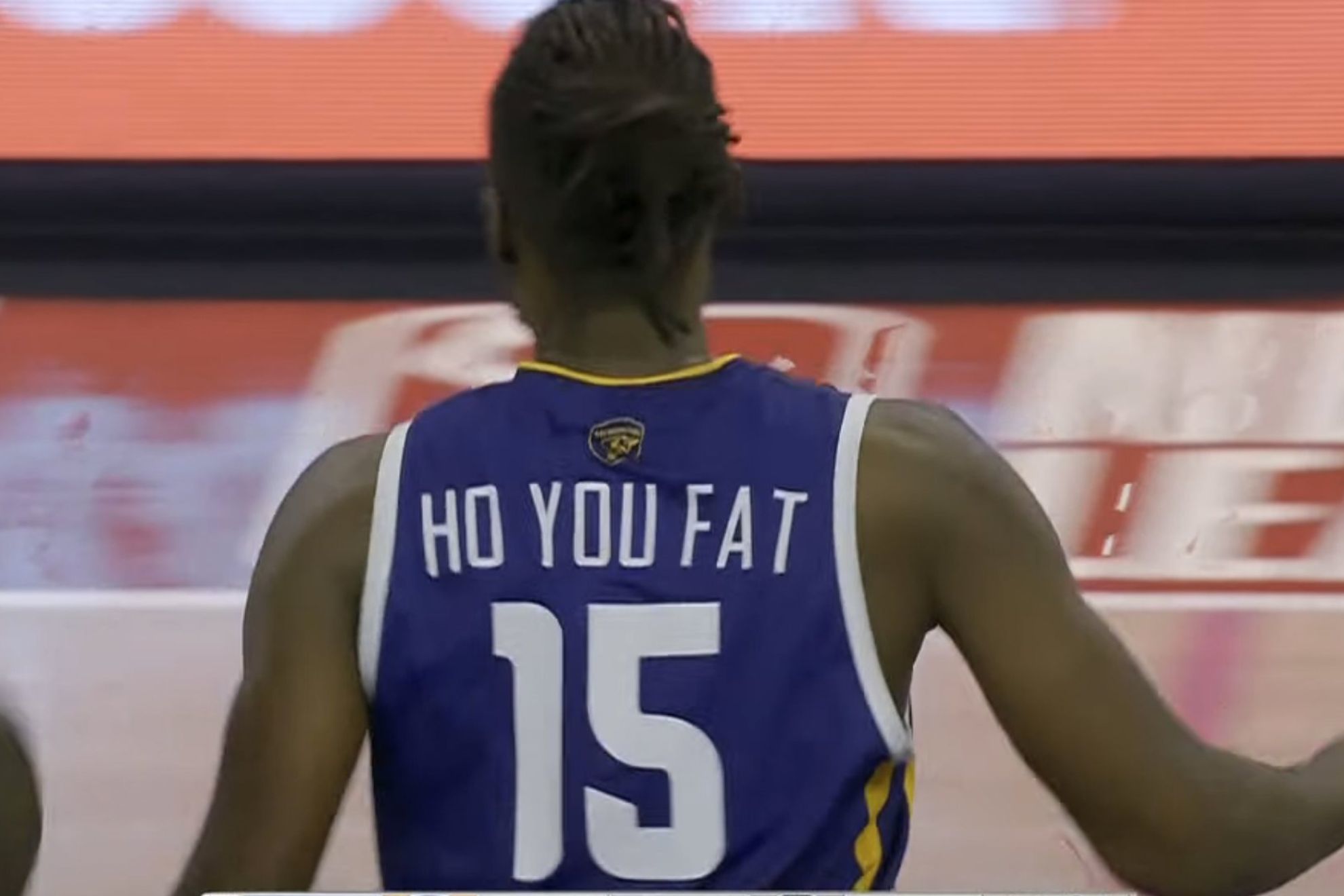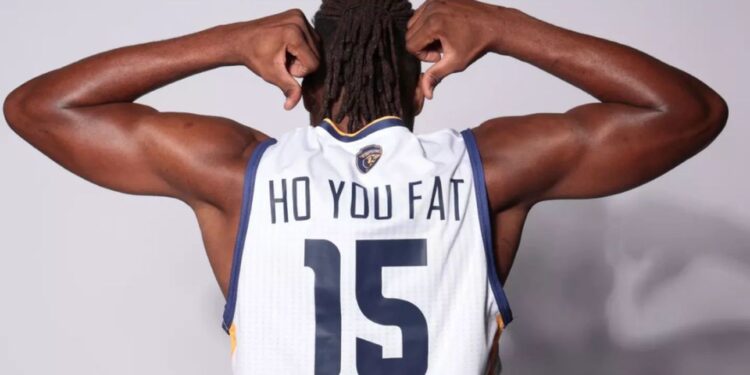Introduction: The Power of Athletic Apparel Ho You Fat Jersey
In a world where appearances often speak volumes before words do, athletic apparel ho you fat jersey has transcended its utilitarian roots to become a formidable tool in shaping not only physical performance but also psychological self-perception. The interplay between clothing and identity is a profound testament to how what we wear is more than just fabric; it’s an intricate tapestry of emotions, perceptions, and aspirations. This article delves deep into the impact of athletic apparel on self-perception, unveiling its multi-faceted influence on the human psyche.
Setting the Stage: The Role of Clothing in Shaping Identity
Clothing is more than a mere necessity; it’s an extension of oneself, reflecting values, preferences, and social affiliations. The choices we make in our attire can communicate volumes about our personality and aspirations, often serving as a silent proclamation of our identity. Athletic apparel, in particular, goes beyond mere functionality, shaping an individual’s narrative, and invoking a sense of empowerment through its design and symbolism.
Athletic Apparel Ho You Fat Jersey: Beyond Functionality to Psychological Impact
As athletes and enthusiasts alike slip into their meticulously crafted ho you fat jerseys, they are inadvertently donning a second skin that carries more weight than meets the eye. These garments act as a conduit between the physical and the psychological, channeling not just sweat and determination but also influencing the wearer’s mental state and self-perception. From the locker room to the arena, the psychology of athletic clothing plays a profound role in enhancing performance and bolstering confidence.
The Psychology of Clothing and Self-Perception
The psychological phenomenon of clothing holds immense significance in understanding self-perception. Cognitive studies reveal that what we wear can impact our cognitive processes, a concept known as the “embodiment principle.” This principle suggests that the physical sensations and movements associated with clothing can extend to our psychological experiences, influencing our self-esteem and even cognitive abilities.
Clothing as a Statement: How What You Wear Reflects Who You Are
The intricate dance between athletic apparel and personal identity is akin to a nonverbal conversation. Every jersey donned is a statement, a reflection of individual values, and an embodiment of aspirations. This silent conversation between clothing and self goes beyond the superficial, seeping into a psychological phenomenon known as the “Halo Effect.” This psychological bias leads us to perceive individuals dressed in athletic attire as more disciplined, competent, and even morally upright.
The Halo Effect: How Athletic Apparel Can Influence Self-Image
“Seeing is believing,” as the adage goes, and the way we see ourselves is profoundly influenced by the attire we wear. The Halo Effect, in the context of athletic apparel, operates as a psychological phenomenon where donning sportswear can lead to a positive self-image. This phenomenon acts as a psychological boost, reinforcing the notion that when we look the part, we can play the part – fostering self-confidence and propelling us toward our goals.
The Evolution of Athletic Jerseys: From Function to Fashion
From the early days of utilitarianism to the contemporary era of athleisure, athletic jerseys have undergone a metamorphosis that transcends performance and encapsulates style. In the annals of sports history, jerseys have evolved from functional uniforms to statements of fashion and identity. Athletes and fans alike find themselves at the intersection of performance gear and street style, showcasing how sportswear now bridges the gap between form and function.
Early Days: Utilitarian Beginnings of Athletic Ho You Fat Jerseys
As we peel back the layers of history, we uncover the utilitarian origins of athletic jerseys. In the early days of competitive sports, jerseys were born out of necessity, serving as a means to distinguish between teams and players. These functional garments carried little aesthetic weight but laid the foundation for the transformation that was to come, setting the stage for a sartorial revolution in the world of sports.
Reading Suggestions: Oh So Jack Fashion Male Grooming Lifestyle
Rise of Athleisure: When Performance Gear Meets Street Style
The evolution of athletic ho you fat jerseys took a remarkable turn with the rise of athleisure, a trend that blurred the lines between performance and leisurewear. Athleisure’s fusion of functionality and fashion reshaped the landscape of athletic apparel. No longer confined to the confines of the gym or the field, athletic jerseys found their way into everyday fashion, becoming a symbol of dynamic lifestyles and a manifestation of a society that values both comfort and style.
Decoding the Connection Between Apparel and Confidence
The connection between athletic apparel and confidence isn’t just a matter of coincidence; it’s rooted in the Embodiment Principle. This psychological phenomenon suggests that the clothes we wear can influence our cognitive processes, impacting our self-esteem and confidence. When athletes slip into their ho you fat jerseys, they are not merely putting on clothing; they are embodying a persona of strength, tenacity, and resilience – a transformative process that can elevate their self-assurance to unprecedented heights.
The Confidence Boost: Exploring the Link Between Ho You Fat Jersey Choice and Self-Assurance
“Ho You Fat Jersey” – the words emblazoned on the back of a jersey can wield significant power over an individual’s perception of themselves. Research indicates that jersey choice can influence the wearer’s confidence levels, with certain slogans and designs acting as a catalyst for self-assurance. The personalized touch of a chosen jersey can serve as a psychological anchor, grounding athletes in their sense of identity and bolstering their conviction on and off the field.
“Ho You Fat Jersey”: Navigating Body Image and Judgment
In a world where appearances are often judged in haste, athletic apparel can become both a sanctuary and a battlefield for self-perception. The language inscribed on a Ho You Fat jersey can inadvertently shape how an individual views their own body. The phrase “Ho You Fat Jersey” encapsulates the dual role that clothing plays – it can be both empowering and unsettling, simultaneously fostering body positivity and inviting self-doubt.
The Weight of Words: How Language Shapes Body Image Perception
Words hold a transformative power that can reverberate through an individual’s psyche. The phrase “Ho You Fat Jersey” exemplifies how language imprinted on clothing can impact body image perception. Studies reveal that the choice of words can affect an individual’s self-esteem, highlighting the delicate balance between self-expression and the potential reinforcement of negative body image stereotypes.
Social Stigma and Stereotypes: Confronting Bias Fueled by Clothing Choices
Society’s perception of body image is often influenced by stereotypes and biases that permeate through various mediums, including clothing. The stigmatization associated with certain body types can find its way into the realm of athletic apparel, perpetuating harmful norms and thwarting efforts to embrace diversity. Addressing these biases requires a collective effort to challenge societal norms and foster a culture of body positivity.
The Empowering Role of Choice: Finding Comfort in Your Jersey
Amidst the complexities of body image, the power of choice stands as a beacon of empowerment. The ability to select a jersey that resonates with one’s values, aspirations, and self-perception can be a transformative experience. The journey from the apprehension of judgment to the embrace of authenticity is paved by the choices individuals make in their athletic attire – a testament to the indomitable spirit of self-expression.
Self-Expression Through Style: How Choosing a Jersey Reflects Personal Identity
Athletic jerseys offer a canvas upon which individuals can paint their personal narrative. The act of selecting a jersey is more than a simple transaction; it’s an act of self-expression. Each jersey color, design, and logo carries a story, echoing personal values and affiliations. In a world where conformity often beckons, donning a chosen jersey is an act of defiance, an assertion of individuality in a sea of uniformity.
Embracing Authenticity: Overcoming External Judgment Through Clothing Empowerment
Authenticity is a rare gem in a world that often values conformity. The power of clothing lies not only in its ability to mold self-perception but also in its potential to transcend societal judgment. By choosing a jersey that aligns with their identity, individuals carve out a space where external opinions hold less sway. This journey toward authenticity is a profound exercise in self-acceptance and empowerment.
Athletic Apparel and Motivation: Beyond the Aesthetic
The impact of athletic apparel extends far beyond aesthetics, stretching its influence into the realm of motivation. Just as donning a jersey can transform an athlete’s mindset, it can also ignite the spark of determination, driving individuals to push their boundaries and unlock their full potential.
The Psychology of Motivation: How Your Jersey Can Ignite Athletic Performance
Athletes understand the intricate link between mindset and performance. The psychology of motivation comes into play when an athlete dons their jersey – it serves as a tangible representation of their commitment and dedication. This psychological trigger activates a heightened sense of purpose, bolstering an athlete’s resolve to excel and leaving no room for mediocrity.
Sports Psychology: Leveraging Jersey Selection to Enhance Focus and Dedication
Sports psychology delves into the intricate dance between the mind and performance. Deliberate jersey selection can act as a psychological strategy, enhancing focus and dedication. By choosing a jersey that resonates with their personal narrative, athletes create an environment where every fiber of their being is aligned with their goals, facilitating a deeper connection between their identity and their pursuit of excellence.
Redefining Beauty Standards Through Inclusivity
The realm of athletics has been a historical battleground for conventional beauty standards. The evolution of athletic apparel and advertising now stands as a harbinger of change, advocating for inclusivity and embracing diverse body types, reshaping societal definitions of beauty and athleticism.
Breaking the Mold: Embracing Diverse Body Types in Athletic Advertising
The power of imagery in athletic advertising cannot be underestimated. The portrayal of diverse body types challenges the long-standing narrative of a singular athletic ideal. As brands showcase athletes of various shapes and sizes donning athletic apparel with pride, they break the mold and redefine the standards of beauty and athleticism, fostering a culture where everyone feels represented and valued.
Inclusive Sizing and Representation: Paving the Way for Positive Body Perception
Inclusivity isn’t just a buzzword; it’s a movement that signifies progress. The introduction of inclusive sizing in athletic apparel signifies a seismic shift in the industry’s approach to body image. By offering a wide range of sizes, brands acknowledge that athleticism is not bound by a specific body type. This shift towards inclusivity paves the way for positive body perception, reiterating that performance knows no size constraints.
Conclusion: The Inner Game of Outer Attire
In the dynamic intersection of athletic apparel and self-perception lies a profound truth – what we wear shapes not only how the world sees us but also how we see ourselves. The journey from utilitarian jerseys to a spectrum of diverse designs and messages is a testament to the evolving relationship between clothing and identity. Every jersey tells a story, intertwining personal aspirations with societal norms, and fueling a journey of self-discovery and empowerment. As the world of athletic apparel continues to evolve, one thing remains certain – the influence of clothing on self-perception is a narrative that’s far from reaching its final chapter.































